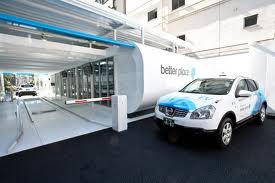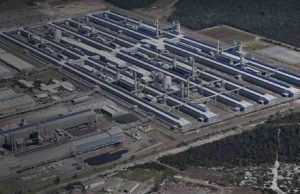Better Place, the electric car network operator that aspired to transform the world’s car industry within a decade, is about to file for liquidation – an apparent victim of wanting to do too much, too soon, or just not doing it very well.
Report of the decision to liquidate the pioneer of battery swap electric vehicles circulated over the weekend and were confirmed late Sunday, Australian time, by the board of directors of its major shareholder, Israel Corp.
“Since we could not find the right investors to partake in a significant proportion of the additional investment, Better Place will submit an application to the court regarding its liquidation,” the company said in a statement.
The decision comes just months after Better Place abandoned plans to open a network in Australia (following an earlier decision to abandon the US), and to focus on small networks in Israel and Denmark. The Australian operations were folded earlier this year, following a dramatic period in which company founder Shai Agassi quit as CEO and his replacement, the Australian CEO Evan Thornley, last only a few months.
Investors and insiders suggest the call to liquidate was inevitable once the decision had been made to focus on two small markets. Reports suggested that the company was $560 million in debt, a situation that was unlikely to be recovered by operating in such small markets. A recent fund raising also failed.
Agassi had once predicted that the world would see a billion electric vehicles by 2020, but by the time it folded it had succeeded in having only attracted 1,300 EVs to its own networks.
“If we’re right we’ll get there fast, and if we wrong we’ll have to wait a year and then get there fast,” Agassi said at the time. “It doesn’t really matter, it is an inevitable conclusion. It is a curve and if you sliding down that curve you will get to that point.”
Agassi was dismissive of the push into hybrid vehicles, saying it was like investing in a fax machine at the onset of computers. For the moment, at least, it looks like the fax machine has won.
The idea of a battery swap network and the philosophy behind it was seductive, and attracted some of the biggest and most progressive companies in the world to invest total of $850 million. They stand to lose the the lot. They include GE, UBS, VantagePoint Venture Partners, Lazard Asset Management, Morgan Stanley, and Agassi himself.
In Australia, where the company once aspired to raise $1 billion to create its network but only raised $25 million before its withdrawal, investors included Lend Lease, Actew AGL, the RACV. The company also tapped high net worth individuals.
 Supporters argue that the model could have worked, but for poor execution. The battery swap technology (pictured right), which was proved to change a battery in a car in less than one minute, was designed for convenience and to address anxiety about range performance – and to focus on large and often used vehicles.
Supporters argue that the model could have worked, but for poor execution. The battery swap technology (pictured right), which was proved to change a battery in a car in less than one minute, was designed for convenience and to address anxiety about range performance – and to focus on large and often used vehicles.
But the company baulked at opportunities in the two countries that could have demonstrated its natural advantage over conventional EVs and the attraction long distance electric vehicle driving, Australia and the US.
The idea was to sell a vehicle at relatively low price, and strike a leasing arrangements over batteries that would deliver cheaper (and cleaner) driving over the life of the vehicle.
Back in 2009, just two years after the company was founded, Agassi told this reporter that the oil price was headed to $200/barrel. In the end, the oil price hasn’t much moved, and while the cost of batteries has fallen, it hasn’t provided the galvanizing impact that a rising oil price could have done. Ford Australia, for instance, signaled its demise a little over a week ago. It was still hopeful of producing large petrol guzzling cars right till the end.
Ironically, Better Place made a battery swap demonstration model of the Ford Territory, but Ford Australia did not take up the offer. Better Place encouraged a group of investors to form EV Engineering build 7 demonstration models of an EV Commodore, in the hope that Holden would take up the offer. (Renault was the only car company to commit to a battery swap model with its Renault Fluence).
The experience with the Commodore proved that such vehicles could be built – on the same production line – and deliver excellent performance. All they needed was a network.
Now that they don’t have a network, the future of the EV Commodore will be in a different form. EV Engineering has now entered into a joint venture with AxiFlux, which has developed a proto-type electric motor, and wants to use those vehicles to demonstrate its new product.








